#tudor queens
Text




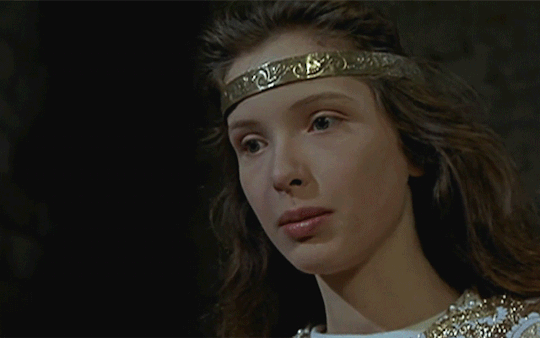

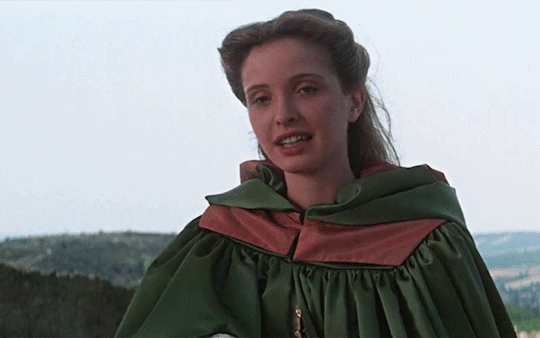
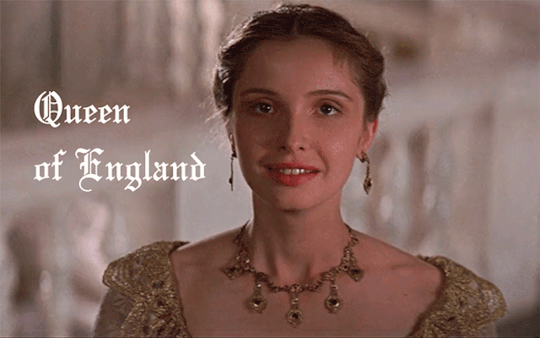
She was beloved by every- one—from the mightiest of diplomats to the lowliest of subjects. During her 17 years as queen, Elizabeth of York was exactly the consort needed by England to help end the ugly, internecine Wars of the Roses.
Sometimes, a gracious personality far outweighs the power of the potentate. Elizabeth of York was such a queen. ⎯ Elizabeth of York: Queenship and Power, Arlene Okerlund
#wanted to try something out#she's been my fancast for a time now#edit#perioddramaedit#perioddramagif#elizabeth of york#EoY#julie delpy#fc: julie delpy#fancast: julie delpy#tudor history#tudor queens#historical women#historicalwomendaily#historicaledit#historical dramas#historyedit#tudoredit#*gifs#*gifset#userrias#userriasgifs
196 notes
·
View notes
Text

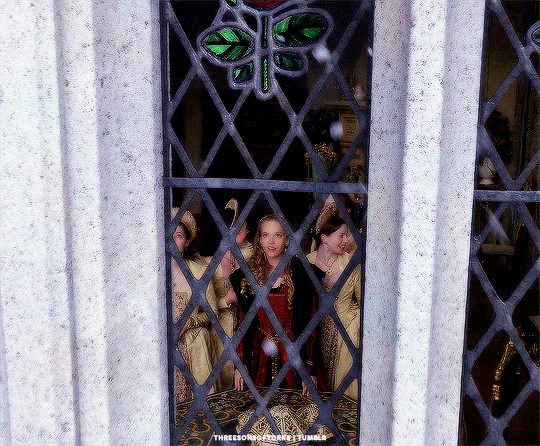
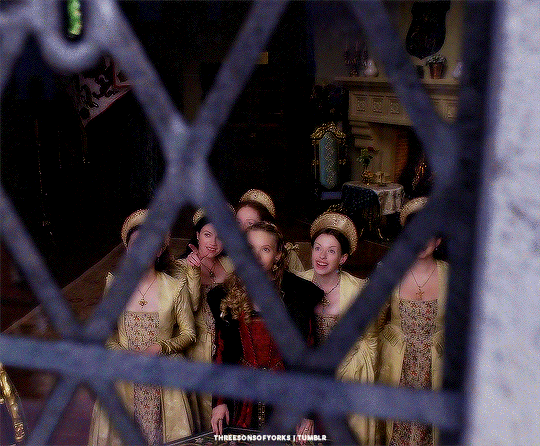



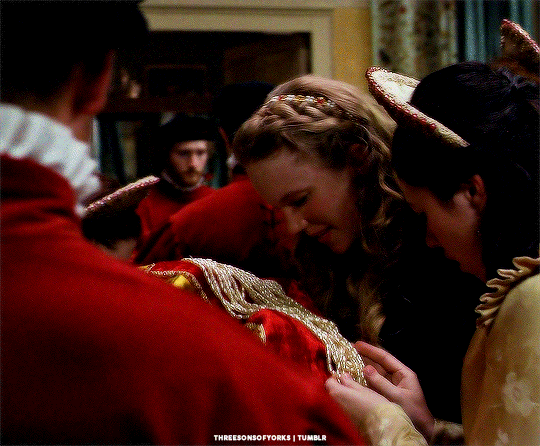
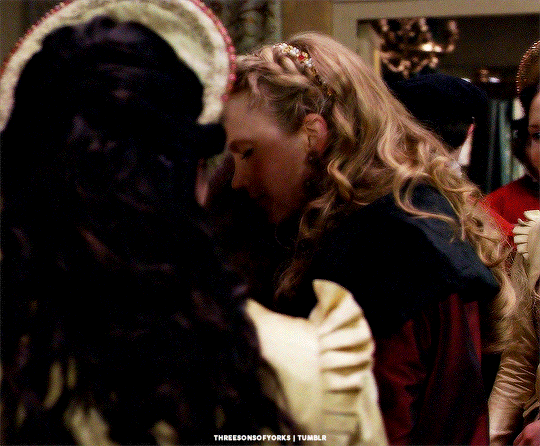
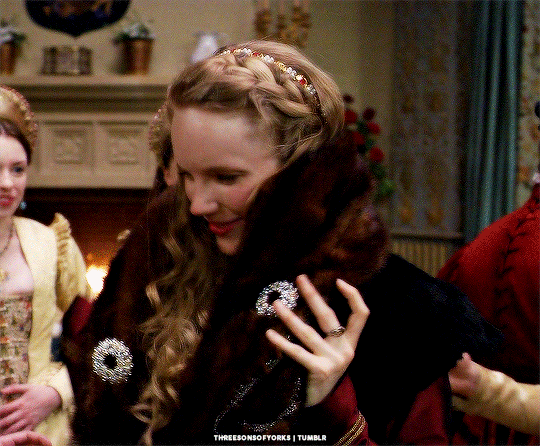
KATHERINE HOWARD and her ladies having some fun 🎀🪞🩰🦢🕯️
THE TUDORS (2007-2010) | 4x02 "Sister"
#periodramaedit#the tudors#thetudorsedit#katherinehowardedit#katherine howard#tamzin merchant#catherine howard#weloveperioddrama#onlyperioddramas#tudorerasource#tudor era#userbennet#userzil#valyrianpoem#tudor queens#16th century#tvgifs#cinemapix#byfefa#mine#userlenna#tuseraixa#tusergabriela
164 notes
·
View notes
Text
random thought bc I've been listening to Six on repeat: the queens claim that the only reason they're remembered is because of Henry, but would Henry be one of the most iconic and well-known English monarchs if not for them?
#like his defining trait is sorta 'bloke who had six wives who he treated pretty badly all told' plus the whole church of england thing#which arguably would have happened anyway in some sense since protestantism was sweeping europe but is generally credited to him wanting#a divorce whether thats accurate or not#yes he was quite charismatic etc but there were plenty of others who were too or at least interesting#like nobody talks about the guy who was Probably murdered in a framed hunting accident#or the one who was executed by having a red hot poker rammed up his arse#or the one who dies after gorging himself on strawberries and eel pie iirc#ok fine maybe i only remember the memorable daeths but you get the point#the six wives are what made henry viii significant is what i'm saying#via shitposts#six#six the musical#tudors#tudor queens#catherine of aragon#anne boleyn#jane seymour#anne of cleves#katherine howard#catherine parr#henry viii
241 notes
·
View notes
Text
when are people actually going to understand that SIX is treating Anne Boleyn like people thought she was at that time, and not how she actually was. it's seen from the point of view of the people who actually believed she was guilty
#I'm completely disappointed of the fact that there's still people who still think of Anne like that#anne boleyn#tudor queens#tudor history#six#six the musical#don't lose ur head
72 notes
·
View notes
Text



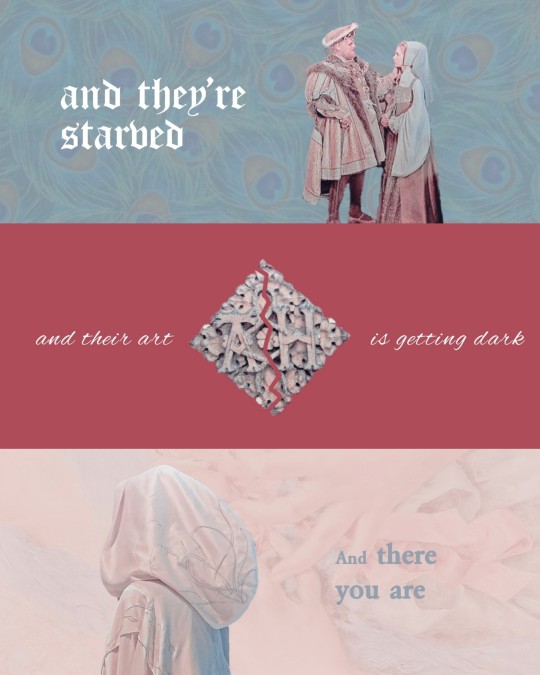
He hath come to the bosom of his beloved
Smiling on him, she beareth him to highest heaven
With yearning heart
On thee we gaze
Oh, gold winged messenger of mighty gods
[...]
You better keep your head down-down
- Billie Eilish, GOLDWING
#this song always reminds me of her like it all fits way too perfectly#the third slide is supposed to be the last one following the order of the lyrics. it's just there because it looked better in that position#jane seymour#jane seymour edit#queen jane seymour#wolf hall#the tudors#henry viii and his six wives#anita briem#my edits#perioddramaedit#graphics#graphic edit#filter by crownedfilter in ig#tudor queens
56 notes
·
View notes
Text
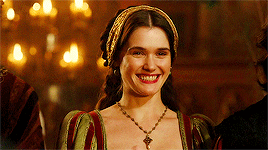



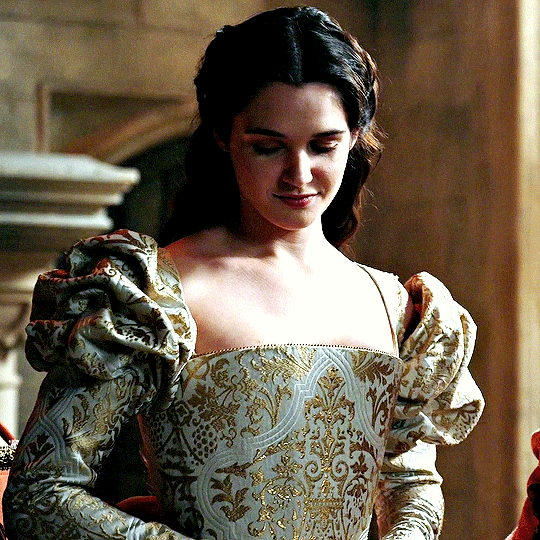
From Princess, to Queen, to Duchess
Mary Tudor (March, c. 1496; London, England - June, 1533; Suffolk, England) was an English princess, the third wife of King Louis XII of France and one of the two sisters of King Henry VIII. Mary was also the grandmother of Lady Jane Grey, who would become titular queen of England for nine days in 1553.
Mary’s father, King Henry VII, betrothed her to Archduke Charles —later Holy Roman Emperor, Charles V — in 1507. In 1514, however, political tribulations caused King Henry VIII to renounce such engagement and arrange a match between his beautiful, charming and yound sister and Louis XII, the sick and french monarch of 52. Since Mary was already in love with Charles Brandon, the first Duke of Suffolk, she made Henry promise that after Louis died she would be allowed to choose her next husband.
The marriage with the french king took place on Octouber of 1514, and Mary performed her role as wife and royal consort with kindness and dedication until he died on January of the following year. Before Henry or the new King of France, Francis I, could use her as a pawn in another political arrangement, Mary secretly wed Suffolk in Paris, probably in late February. Henry VIII was infuriated at the news, but eventually the pair regained the king’s favour, with Suffolk paying him a large sum of money and perhaps with the help and intercession of Cardinal Wolsey.Mary and Charles had four children, two daughters and two sons:
⇒ Henry Brandon (11 March 1516 – 1522);
⇒ Lady Frances Brandon (16 July 1517 – 20 November 1559), married to Henry Grey, 3rd Marquess of Dorset, and mother to Lady Jane Grey;
⇒ Lady Eleanor Brandon (1519 – 27 September 1547), married to Henry Clifford, 2nd Earl of Cumberland;
⇒ Henry Brandon, 1st Earl of Lincoln (c. 1523 – March 1534).
Mary had enjoyed unprecedented freedom during her teenage years at her brother's court. Just fourteen when her father, Henry VII died, she spent the next five years almost completely unchaperoned, encouraged to participate in every event, celebration and feast, each planned to display the opulence of the english royal family. She shared Henry's exuberance for spectacle and, for some time, was one of the central ladies of the court, admired and sociable. Like him, she loved dancing, masques, and parties; they were also very close, with the princess being the apple of the king's eye. It's rumored that Henry's famous warship, the Mary Rose, was named after both his favorite sister and his only daughter with Catherine of Aragon.
Upon her arrival in France, Mary was proclamed, by the Venetian Ambassador, to be "handsome and well favoured, grey-eyed; slight, rather than defective from corpulence, and conducts herself with so much grace, and has such good manners, that for her age of 18 years—and she does not look more—she is a paradise." She was particularly admired by her contemporaries for her long red hair, which she had inherited from the Plantagenet lineage through her mother, Elizabeth of York, who had also been an celebrated beauty.
After her second marriage, the Duchess of Suffolk lived a quiet life in the country, retired from court, although she had been know to have attended the famous Field of the Cloth of Gold at Guines, near Calais, in 1520. Often referred to as the French Queen, she was known to dislike Anne Boleyn and in defiance of her brother was to prove a firm supporter of her sister-in-law, Catherine of Aragon, in the matter of Henry VIII's annulment of his marriage to his first wife.
Mary visited London for the last time to celebrate the wedding of her eldest daughter, Lady Frances Brandon, to Henry Grey, Marquess of Dorset, in 1533. After suffering failing health for some years, Mary Tudor died on 25 June 1533 at the age of thirty-eight at Westhorpe Hall, Westhorpe, Suffolk, possibly of cancer. Henry VIII had requiem masses sung at Westminster Abbey for the repose of her soul and she was given a magnificent funeral, which her husband did not attend. Her body was interred at the Abbey of Bury St Edmunds. The Duke of Suffolk quickly remarried again, in that same year, to his fourteen-year-old ward, Katherine Willoughby (1519–1580), suo jure Baroness Willoughby de Eresby. Katherine had been betrothed to his eldest surviving son, Henry, Earl of Lincoln, but the boy was too young to marry, and Charles, to eager to add the heiress fourtune to his own.
#tudor dynasty#tudor queens#tudor history#tudor era#tudorqueens#the tudors#mary tudor#henry viii#elizabeth of york#charles brandon#tudor england#tudor period#tudor women#english royalty#house of tudor#medieval england#english history
33 notes
·
View notes
Text

February 13, 1542 Katherine Howard was beheaded RIP🤍
#katherine howard#katherine howard aesthetic#the tudors#queen things#tudor rose#perioddramaedit#period drama#tudorsedit#six wives of henry viii#tudoredit#thetudorsedit#the tudor dynasty#tudor queens#tudor period#tudor england#period edit#period drama junkie#perioddramacentral#perioddramasonly#perioddramasource#periodedit#beheaded cousins#beheaded#six queens#tamzinmerchantedit#tamzin merchant#tudor tag#tudor history#khowardedit#k howard
5 notes
·
View notes
Text
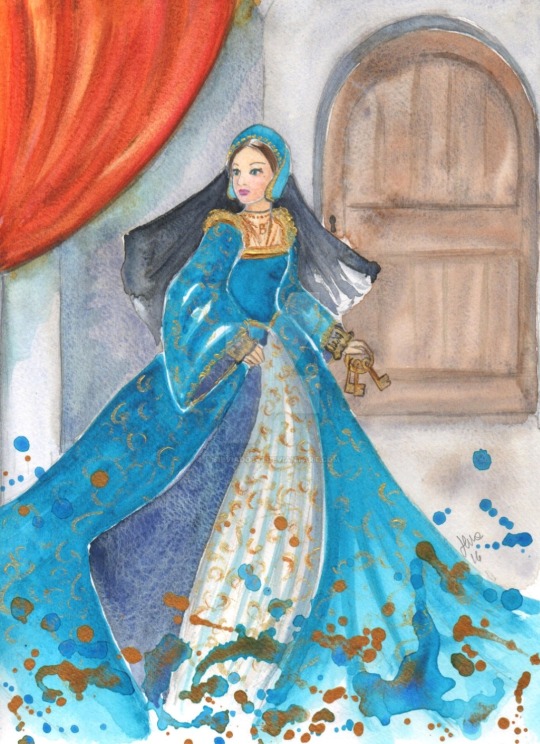

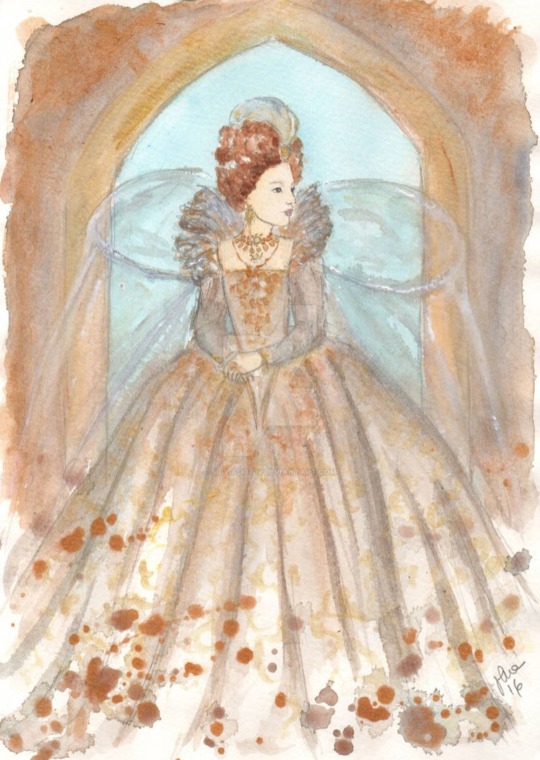
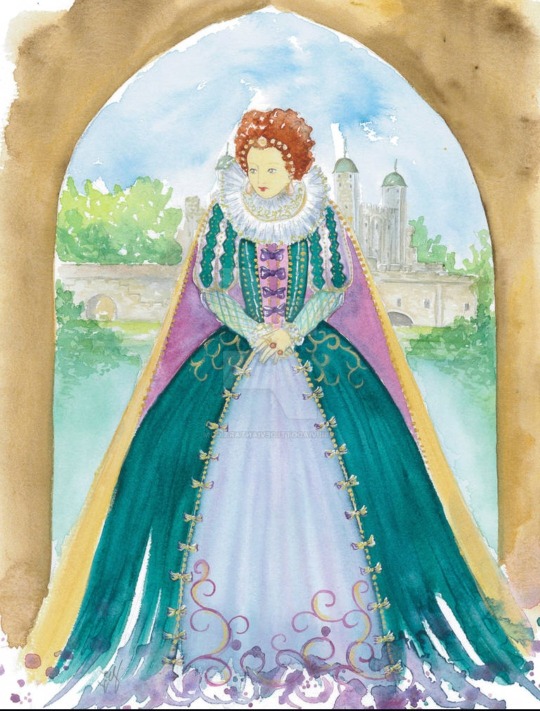
Mother and daughter 👑❤️
Anne and Elizabeth by silviadotti on Deviantart
#anne boleyn#queen anne#princess elizabeth#queen elizabeth#henry viii#tudor#tudors#becoming elizabeth#tudor queens#my elizabeth shall be queen#👑👑👑#boleyn family
104 notes
·
View notes
Text
ok this is the most important poll i got for y'all /hj
#house of tudor#tudors#tudor queens#tudor history#tudor period#tudor era#tudor dynasty#tudor tag#elizabeth of york#henry vii#henry vii of england#catherine of aragon#catalina of aragon#anne boleyn#the tudors#the tudor dynasty#jane seymour#anna of cleves#anne of cleves#katheryn howard#catherine howard#katherine howard#katherine parr#catherine parr#lady jane grey#jane grey#9 days queen#mary i#mary i of england#bloody mary
9 notes
·
View notes
Photo

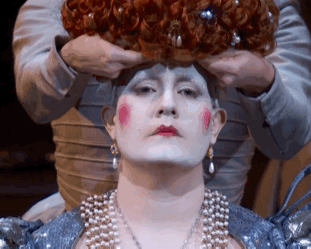
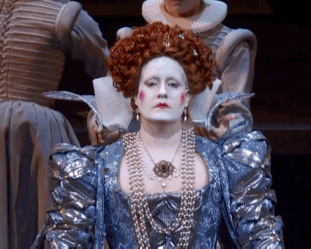

ELZA van den HEEVER in
DONIZETTI: MARIA STUARDA
Metropolitan Opera, 2013
#Elza van den Heever#Donizetti's Tudor Queens#Opera#Donizetti#Maria Stuarda#Metropolitan Opera#muchadogifs#opera gifs#dailytudors#Tudor Queens#Queen Elizabeth#British Royal Family
22 notes
·
View notes
Text
absolute love of overblown drama vs regognizing that anne boleyn was in all likelihood a victim of workplace harassment instead of a conniving seductress: fight
#like i get that it’s VERY FUN but let’s bffr#anne boleyn#henry viii#the tudors#tudor queens#winsome’s wailings
18 notes
·
View notes
Text

#happy birthday lizzie#i'm 600 words into my dissertation's introduction#and obvs i'm gonna be talking about her in it so#moodboard#tudor memes#elizabeth of york#tudor queens#tudor history#english history#history memes#historical memes#maria rambles#personal#historical queens#medieval history#english queens
101 notes
·
View notes
Text
Getting ready for when I see SIX on the 27th.
Super excited yet nervous
First time to London by myself
Gotta have a notebook to document my day.



6 notes
·
View notes
Text
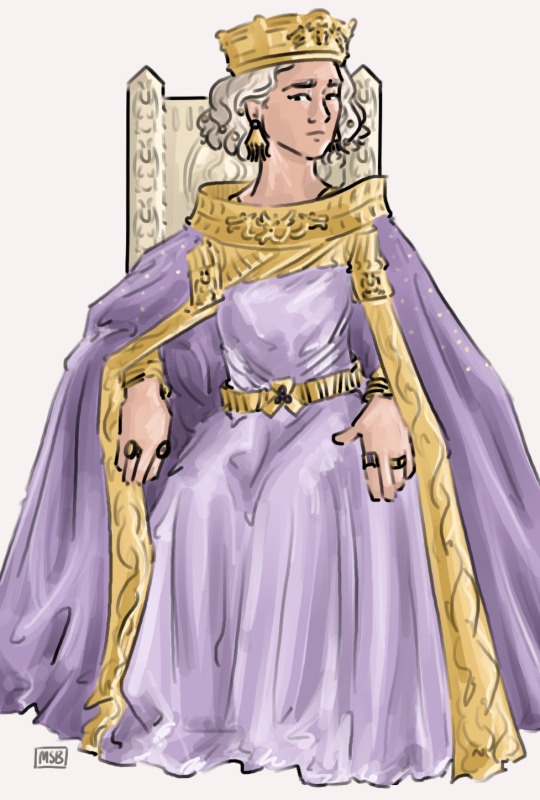
long live the queen
#Meereen!dany my beloved#not the most accurate ghiscari tokar but I wanted to be distinct from my more mid Tudor westerosi dresses#whilst still taking inspiration from my Shakespeare based reference 🥰#Daenerys Targaryen#Daenerys stormborn#dany#queen of Meereen#fashion of ice and fire#a song of ice and fire#asoiaf#Valyrian scrolls#Valyrianscrolls#minsart#my art#fanart#grrm#adwd#a dance with dragons#house targaryen
511 notes
·
View notes
Text
it's not Henry VIII and his six wives
it's actually Catherine Of Aragon, Anne Boleyn, Jane Seymour, Anne Of Cleves, Catherine Howard and Catherine Parr
six women who were casually married to the same guy
#tudor queens#tudor dynasty#catherine of aragon#anne boleyn#jane seymour#anne of cleves#catherine howard#catherine parr#henry viii
69 notes
·
View notes
Text
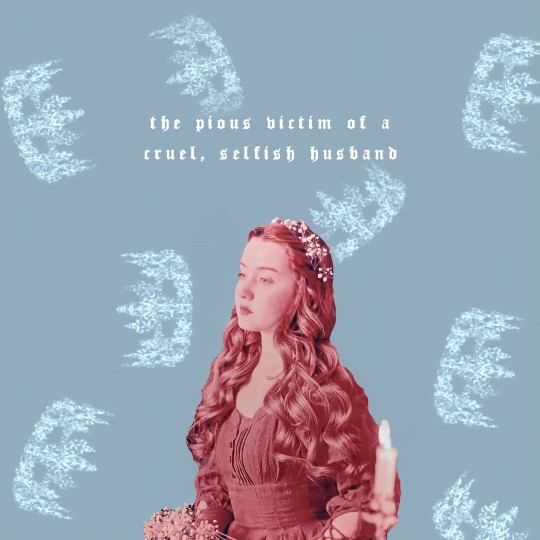



"It is, of course, possible that these Spaniards lied, or dressed up the truth, to protect their beloved
princess. It is also possible that they did not. Either way, they were no more or less likely to be lying than
the witnesses in England. That makes their testimony as valid as that of those who claimed to have met an
ebullient Arthur demanding beer to quench the thirst of a night of hard love-making. Their words add, if
not a definitive tilt, then some extra grains of sand to one side of the moral balance on which Catherine is habitually weighed. That balance measures whether she was the pious victim of a cruel, selfish husband
or a consummate liar hiding behind an apparently saintly exterior. Judgements of her have swung
backwards and forwards from one extreme to the other over the centuries – and still divide people today. [...]
Catherine can, of course, be measured on many more scales than just that which deems her either
truthful or deceiving. The most important traits of her character have, in fact, little to do with honesty or falsehood. What really matters about her is the strength of that character. A protected childhood amid a
family of intense, self-demanding Spanish women does much to explain where this came from. Catherine
grew up to become a woman of deep, even exaggerated, intensity. The complex and unhappy early English
years, with their constant illnesses, eating problems and stern written instructions from the pope to avoid
the self-harm of excessive fasting, give the first few clues to that nature. These were the reactions of a
young, perfectionist woman who found herself lonely, lost and unloved in a foreign land.
That same intensity and perfectionism explain, too, both her success and popularity as a queen consort
and her final embrace of potential martyrdom."
-Giles Tremlett, Catherine of Aragon: Henry's Spanish Queen
#she really putted it in you all's consciences didn't she?#fancast is annesvintagediary on instagram#she looks too much like a good young CoA. i'm still trying to find older fancasts for her tho#catherine of aragon#katherine of aragon#catalina de aragon#henry viii#tudor queens#tudor history#fancast#perioddramaedit#period drama#my edits#graphics#graphic edit#history#aesthetic#moodboard#filter credits: crownedfilters in instagram#quote
165 notes
·
View notes